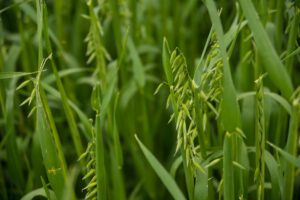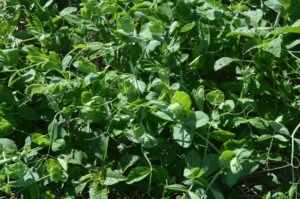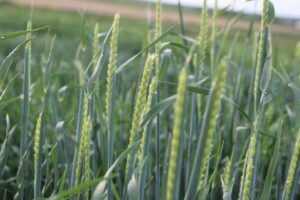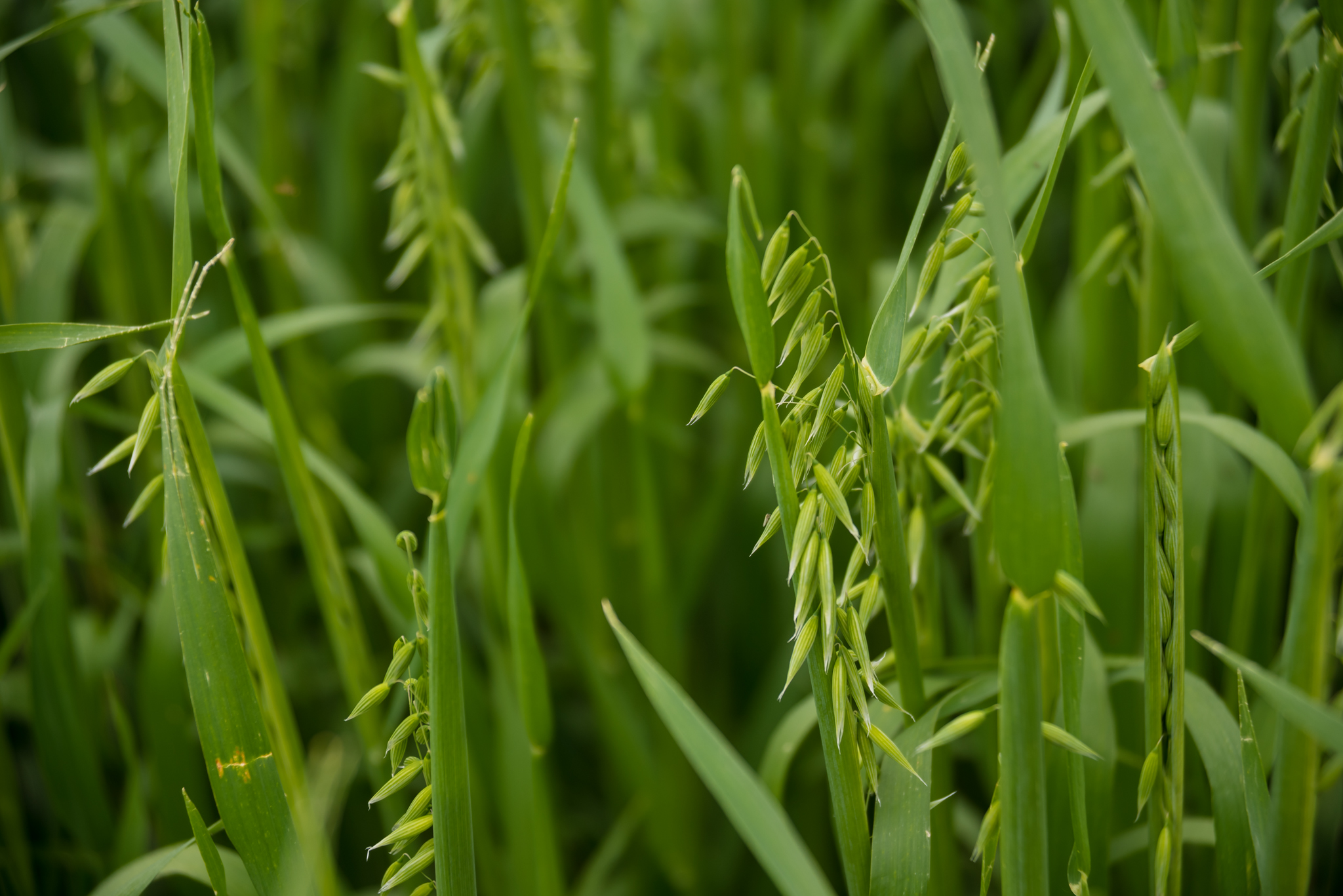If peanut butter, jelly, and bread is the quintessential combo for simple, tasty sandwiches, a mix of peas, oats, and barley would be the equivalent in the cover crop world. Especially for those feeding livestock, this combo can be a game changer for spring nutrition.
Oats at a glance
Spring oats are known as one of the fastest growing crops and are commonly used as a nurse crop for a variety of different purposes. Oats also provide great yield potential in terms of tonnage. Paired with the nutritional quality of the peas and barley, this makes for an excellent trio. Additionally, oats offer adequate housing for mycorrhizal fungi in the soil, drawing another level of diversity to the soil.

Spring Oats
Peas at a glance
Spring peas offer nitrogen fixing benefits for the soil leading to high levels of protein for your cattle or other livestock. This legume is also among the fastest growing spring plants, which complements the oats nicely. Peas are commonly used in grazing and haying mixes or even as green manure.

Forage peas
Barley at a glance
Barley, though not the highest yielding spring crop, offers extremely high quality forage. This beardless barley can be used to add diversity to an oat and pea mix and provide high quality forage. It is also very tolerant of high pH or salty soils. In addition to making a great grazing or hay crop, barley can also be harvested as a grain for livestock feed.

Spring Barley
Power in diversity
Though at first glance, this mix doesn’t look particularly diverse and even compared to most of the custom mixes we make it does lack some plant variety. This mix, however, has the power to add lots of diversity, especially in a landscape that is accustomed to monocultures. The oats, peas, and barley immediately add diversity to a rotation of corn, beans, and perhaps wheat. These fast establishing species will be quick to take root and begin suppressing weeds. They also attract beneficial microbes and fungi underground, keeping the plants and soil healthier. Additionally, this combo will provide nutrition to a whole host of livestock animals. From a big picture perspective, this mix can add diversity in a variety of different ways at a low cost. Add even more diversity with our MycoGreen NPK product, a concentrated source of ten functionally diverse mycorrhizal fungi and eight bacterial species. This is a great addition for anybody looking to increase the fungal diversity in their soil. The Green Cover Team can mix the seed and inoculant together so you don’t have to!
2024 Availability
Last year’s growing season was a great production year for many of our pea, oat, and barley producers. As a result, we have plenty in stock and would rather see it covering acres and feeding livestock as opposed to sitting in our warehouse. We are offering a unique discount structure for large quantities of a single species or some mixture of the three. Call us at 402-469-6784 or check out our Spring Trio Mix to learn more.
Want to talk with one of our expert sales representatives?
Fill out this form or give us a call today. 402-469-6784.

